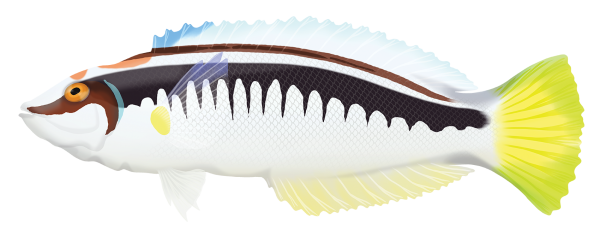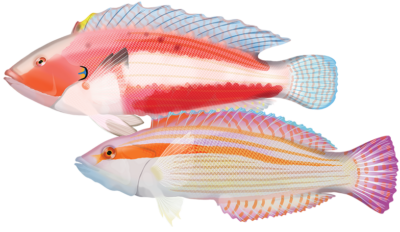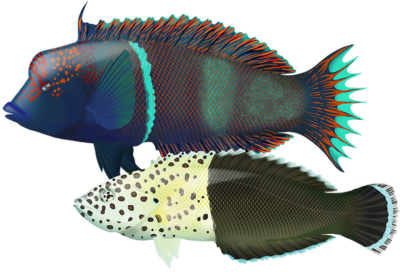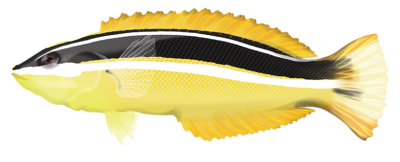Quick Facts
Distribution
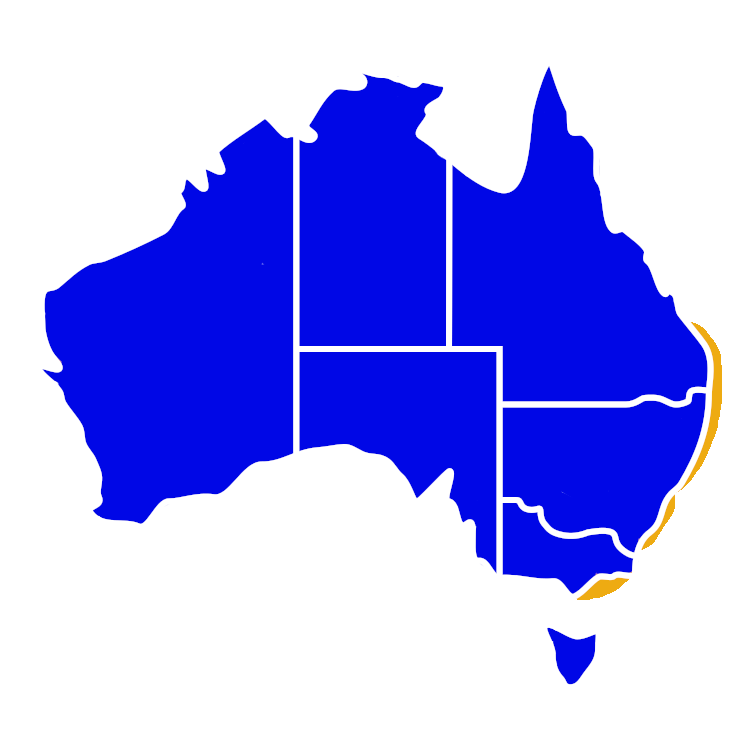
Interesting Info
- The Comb Wrasse is a marine fish species that can be found in the waters surrounding eastern Australia, including New South Wales, Queensland, and Victoria.
- The Comb Wrasse has a distinct appearance, with a bright blue-green head and red-orange body, often marked by a white stripe between the two colours, as well as metallic scales and small blue dots on the head and fins. Some individuals may have white or cream colours on their underside, giving them a mottled appearance.
- They primarily feed on small invertebrates, such as crustaceans, molluscs, and worms. They also consume algae and other plant material.
- They are a diurnal species, which means that they are most active during the day and rest at night.
- They are a solitary species and can be territorial, especially towards other Comb Wrasse.
- The Comb Wrasse is a protogynous hermaphrodite, meaning that they start their life as females and can later change to males.
- Breeding occurs during summer and autumn, with males building nests in rocky crevices to attract females.
- Estimated lifespan is up to 15 years.
Species Interaction
Recreational Fishing, Snorkeling & Diving
The Comb Wrasse is not a highly targeted species for recreational fishing in Australia, but they can be caught by anglers who are targeting other species or using baited hooks (bycatch). Comb Wrasse are a colourful and active fish species that can be a joy to observe for snorkelers and divers. They are commonly found in shallow waters near rocky or coral reef habitats.
Scientific Classification
Kingdom: Animalia
Phylum: Chordata
Class: Actinopterygii
Order: Perciformes
Family: Labridae
Genus: Coris
Species: Coris Picta
Conservation Status
The Comb Wrasse is not listed as a threatened or protected species in Australia, according to the International Union for Conservation of Nature (IUCN) and the Australian Government’s Department of Agriculture, Water and the Environment.
Fish Taste Quality
Comb wrasse are considered to be good eating fish. They have firm, white flesh that is said to be mild and slightly sweet in flavour.
Taste Rating: 3/5
How to catch
Comb Wrasse
Catch Difficulty: Easy
Tackle: Running Sinker Rig
Bait: Crab, Fresh cut flesh baits, Pilchards, Prawns, Squid, Worms
Technique: Keep bait on the bottom, Keep bait close to the reef/structure
Popularity: Not targeted - Bycatch
Recreational Viewing
- Snorkeling & Scuba
Finding: Intermediate
Temperament: Peaceful
Location: Inner Reef, Outer Reef, Lagoon
Danger: None


